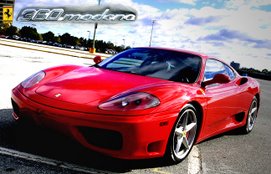
The Bugatti Veyron, a car laden with superlatives including fastest, most luxurious and most expensive, has made its debut as the fastest car in the world.
THE widely respected German weekly car magazine Auto Motor und Sport recently took on a survey to determine which car among a variety of exotic sports models was the fastest of them all. It must have been an interesting experience for those charged with the task of evaluating the cars and of course, it takes a driver with serious racing experience to point a supercar down a long track straightaway and drive it to the limit.
Few tracks anywhere in the world have a straight long enough to explore an ultra high-performance car’s outer limits, but the team at the magazine settled on Volkswagen’s huge Ehra-Lessien test track near its headquarters in Wolfsburg.
This track, has two nine-kilometre-long straights with banked turns at each end. It’s a huge track and makes the Indianapolis Motor Speedway look like a quarter-mile oval.
According to the report on this test, nine models were evaluated using a computerized speed recording system and not the cars’ instruments. They comprised some the most desirable sports cars on the planet — a true cross-section of automotive aristocracy. Taken to the track were the Aston Martin Vanquish S, Bugatti Veyron, Chevrolet Corvette Z06, Dodge Viper SRT-10, Ferrari 599 GTB Fiorano, Ford GT, Lamborghini Murcielago LP640, Mercedes SLR McLaren, and Porsche 911 Turbo.
When this exercise in “pushing the envelope” concluded, the Bugatti Veyron came out on top with an almost unbelievable 402 kilometres an hour. Second fastest was the Lamborghini at 340 km/h and third came the Ferrari, recording 335 km/h. The Veyron’s zero to 100 km/h time was under three seconds, which was just as amazing as the car’s top speed. For the record, the fastest ever been on a (long) test track was 305 km/h in a Porsche 911 Turbo.
But what does all this mean to the average car buyer? Is the availability of cars with this kind of performance a profitable ploy to attract wealthy buyers who have the funds not only to buy the car, but to take it to a test track or racing circuit now and again? Certainly the kinds of speeds these supercars can achieve are almost of no value at all in today’s traffic conditions.
For many automakers, top-of-the-line sports cars are a way of packing in every ounce of technology to evaluate what kinds of safety margins vehicles might benefit from lower down the model ranges. For example, if an automaker can build a car capable of 300 km/h and a zero to 100 km/h time in the four-second range, just imagine how safe it can build a family sedan posting half those performance figures.
In a sense, these supercars pioneer technology that eventually finds its way to everyday vehicles — and the same can be said about auto racing, too. The same dictum can be applied to the aerospace industry. Could Boeing have designed its 777 airliner to fly us across the world at more than 900 km/h if it hadn’t been able to develop, at an earlier stage, technology for military aircraft capable of twice that speed and more? Probably not.
Bugatti is part of the big VW/Audi group (as is Lamborghini) and it’s easy to believe that the kind of technology used to develop the Veyron is looked at carefully by the people who design and engineer.





No comments:
Post a Comment